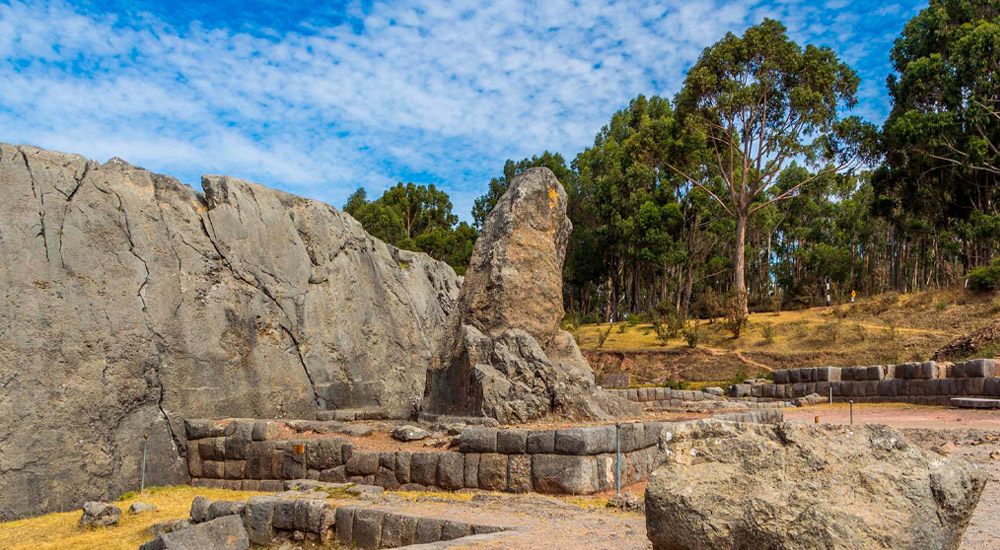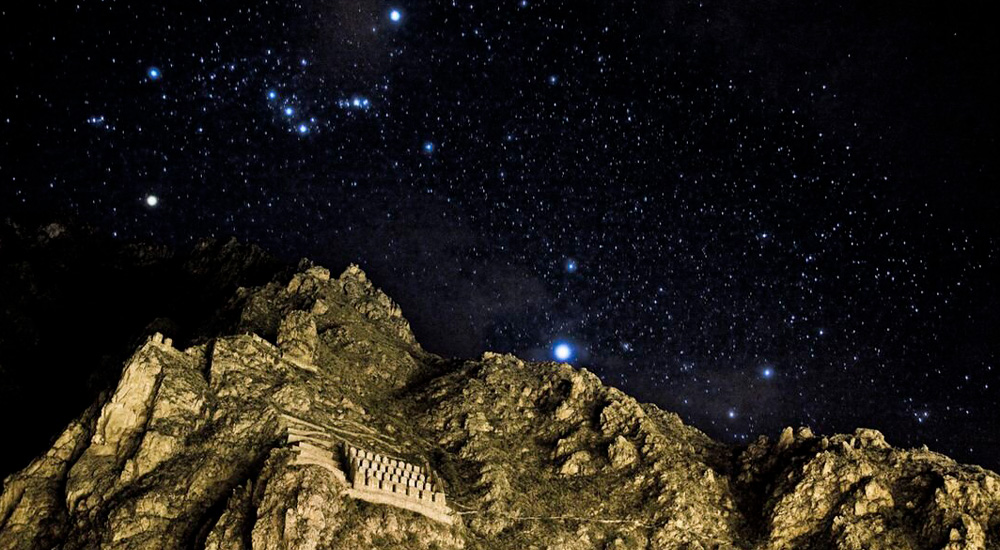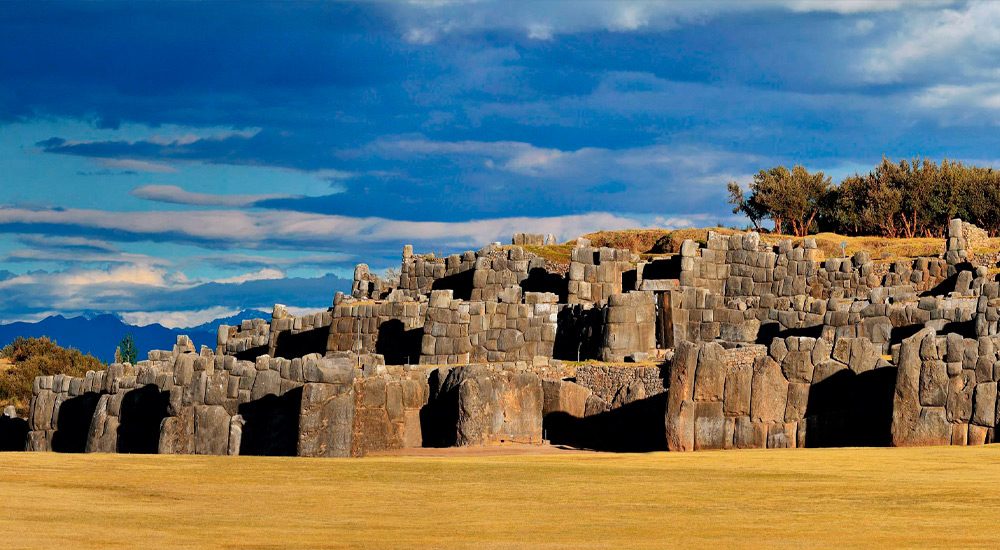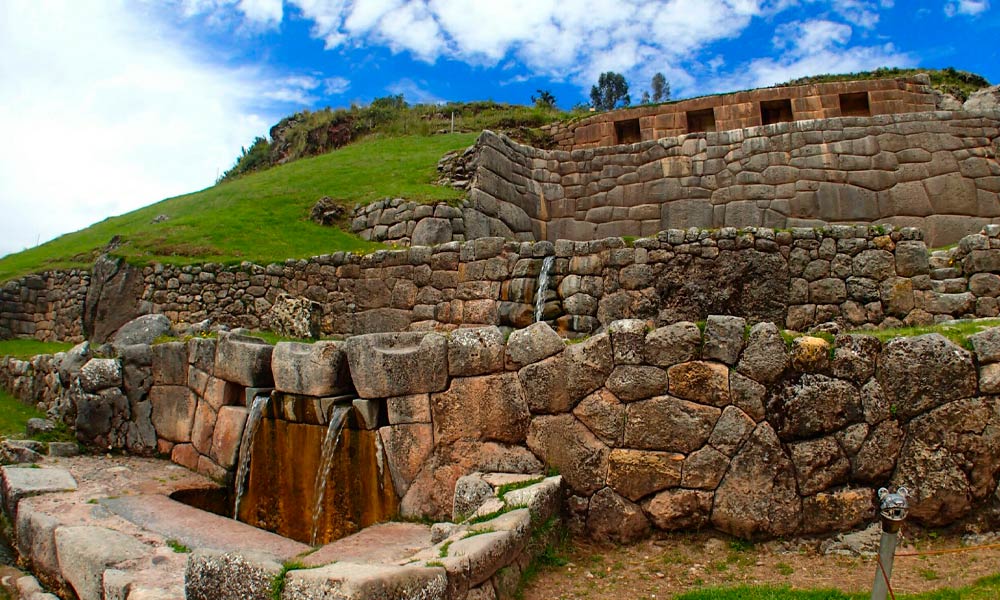Embarking on an enigmatic journey underground allows you to uncover the hidden treasures and secrets that lie beneath the surface of Cusco’s ancient landscape. Two remarkable sites that invite exploration are the Maras Salt Mines and Q’enqo Caves.
Maras Salt Mines: Nestled in the Sacred Valley, the Maras Salt Mines have been in operation since pre-Inca times. These terraced salt pans cascade down the hillside like a surreal staircase to the earth’s core. What makes these salt mines truly captivating is the way they harness the natural elements—saltwater from a nearby spring and the sun—to produce salt through an intricate evaporation process. As you descend into this intricate network of salt pans, you’ll be struck by the stark contrast between the brilliant white salt ponds and the rugged, ochre-hued mountain terrain. This place is not only a testament to the ancient Inca’s profound understanding of agriculture and resource management but also a visual wonder that inspires contemplation about the harmonious relationship between humans and the natural world.
Q’enqo Caves: Just a short drive from Cusco, you’ll find the enigmatic Q’enqo Caves, a complex of subterranean chambers and passageways carved into the living rock. These caves hold great spiritual significance for the Incas, who used them for ceremonial and ritual purposes. As you explore the dimly lit tunnels and chambers, you’ll discover intricately carved niches, altars, and symbols, which provide glimpses into the Inca’s intricate cosmology and spiritual practices. One of the highlights is the “Sacrificial Stone,” an enormous carved rock where it is believed that sacred offerings and rituals were conducted. The atmosphere in these caves is both eerie and awe-inspiring, as if the very stones whisper tales of a time long past.
Delving into the secrets of the Maras Salt Mines and the Q’enqo Caves offers a unique perspective on Cusco’s history and spirituality. These underground marvels reveal the ingenuity of ancient civilizations and the profound connection between humans and their environment. Whether you’re contemplating the intricate salt ponds of Maras or navigating the mysterious passages of Q’enqo, these sites invite you to immerse yourself in the enigmatic and evocative underground world of Cusco’s past.
Maras Salt Mines: A Salty Enigma of the Andes
The history of Maras Salt Mines is a testament to the ingenuity and resourcefulness of the people of the Andes, dating back to pre-Inca times. As you venture into this captivating landscape, you’ll find yourself immersed in a tradition that has been upheld for centuries.
Ancient Origins: The story of Maras Salt Mines begins with the early inhabitants of this region, who noticed something remarkable—the presence of saltwater springs flowing from the mountainside. Recognizing the value of this resource, they ingeniously constructed a network of terraced salt pans, etching them into the mountainside like a series of steps leading into the Earth. These early salt producers channeled the mineral-rich water into these terraces and allowed it to evaporate under the intense Andean sun, leaving behind the precious salt crystals.
Pre-Inca and Inca Influence: The salt extraction techniques used at Maras predate the Inca Empire but were adopted and expanded upon by the Incas. Under Inca rule, Maras became a crucial part of the empire’s economic and dietary infrastructure. Salt was not only essential for preserving food in an age before refrigeration but also for enhancing its flavor. The Incas ingeniously managed and maintained the salt pans, using a cooperative labor system called “mit’a” to ensure fairness and sustainability.
The Terraced Landscape: The most striking aspect of Maras is undoubtedly the terraced landscape itself. As you wander among the thousands of salt pans, you’ll be mesmerized by the stark contrast between the gleaming white salt crystals and the earthy hues of the surrounding mountains. This patchwork of pools, each owned and tended to by local families, creates a visually stunning mosaic. It’s a scene that captures the essence of harmony between human labor and nature’s abundance.
Traditional Practices: What’s equally fascinating is that the salt extraction techniques employed at Maras today have changed very little over the centuries. Families in the region still manage their own salt pans, ensuring that this ancient tradition endures. It’s an impressive display of intergenerational knowledge and a testament to the enduring value of this resource.
The Maras Salt Mines offer a captivating journey through time, allowing you to step back into an era where ancient civilizations harnessed the natural world’s offerings with ingenious techniques. As you explore this unique landscape, you’ll not only witness the breathtaking beauty of the terraced salt pans but also gain a deep appreciation for the rich history and traditions that have sustained Maras for generations. It’s a living testament to the enduring relationship between the Andean people and the land they call home.

Q’enqo Caves: Where Legends and Rituals Reside
The Q’enqo caves are a place of profound mystery and spiritual significance, deeply entwined with the rich tapestry of Andean history and culture. As you venture into the depths of these subterranean chambers, you’ll find yourself on a journey through time, uncovering the enigmatic rituals and spiritual practices that have unfolded within their shadowy confines.
A Subterranean World: The Q’enqo caves are a remarkable testament to the ingenuity of the ancient Andean peoples. These intricate underground chambers, carved into the living rock, served as sacred spaces where rituals and ceremonies were conducted. The very act of descending into this hidden world evokes a sense of reverence and wonder.
Spiritual Significance: To the indigenous people of the Andes, Q’enqo held great spiritual significance. It was believed to be a place where the natural world and the realm of the sacred intersected. The subterranean chambers were used for various rituals, including offerings to Pachamama (Mother Earth) and ceremonies dedicated to the gods of the Inca pantheon. The precise nature of these rituals remains shrouded in mystery, adding to the aura of intrigue that surrounds Q’enqo.
A Living Legacy: What makes Q’enqo even more captivating is that it continues to be a site of spiritual importance in the present day. The ancient practices and ceremonies that once unfolded here have not been forgotten. Instead, they have been passed down through generations, and today, Q’enqo is used as a sacred space for ceremonies such as the Ayahuasca Ceremony in Cusco and the San Pedro Ceremony Cusco. These ceremonies draw on the deep well of ancestral wisdom that permeates the site, offering participants a unique opportunity to connect with the divine and embark on transformative inner journeys.
Mystical Energy: One cannot help but feel the palpable energy that permeates the Q’enqo caves. It’s as if the very walls of these chambers are infused with the spiritual essence of countless generations who have sought solace, guidance, and connection within their recesses. Whether you’re a spiritual seeker or simply an adventurer with a curiosity for the unknown, Q’enqo has the power to stir the soul and awaken a sense of wonder.
The Q’enqo caves are a portal to a world both ancient and timeless. They offer a rare glimpse into the spiritual practices of the Andean people and continue to serve as a bridge between the physical and the metaphysical. As you explore these subterranean chambers and partake in the sacred ceremonies they host, you’ll find yourself on a journey of inner exploration and transformation, guided by the echoes of the past and the enduring mysticism of Q’enqo.

Hidden Treasures: The Enigmatic Artifacts of the Underground World
The archaeological treasures concealed within the Q’enqo caves are a testament to the profound spiritual practices of the Inca civilization. As you venture deeper into these subterranean chambers, you’ll encounter a world of captivating artifacts and enigmatic carvings that provide a window into the spiritual life of this ancient culture.
Ancient Carvings: The walls of the Q’enqo caves bear witness to the skilled craftsmanship of the Inca people. Here, you’ll find intricate carvings etched into the rock, depicting symbols, animals, and geometric patterns. These carvings are believed to hold deep spiritual significance, possibly serving as representations of gods, celestial bodies, or sacred ceremonies. Each carving is a silent testament to the artistic and spiritual prowess of the Inca civilization.
Ceremonial Offerings: Throughout the chambers of Q’enqo, archaeologists have discovered a wealth of ceremonial offerings. These offerings take various forms, from finely crafted pottery to intricately woven textiles and even sacrificial items. It’s believed that these offerings were made as part of rituals and ceremonies dedicated to the gods. They reflect the reverence and devotion of the Inca people to their spiritual beliefs, where the exchange of offerings played a central role in maintaining harmony with the divine.
Spiritual Insights: The carvings and offerings found within Q’enqo provide valuable insights into the spiritual practices and cosmology of the Inca civilization. It’s believed that these chambers were not merely places of worship but also served as spaces for astronomical observations and divination. The Inca, with their deep connection to the natural world and the cosmos, sought to align their spiritual practices with the rhythms of the universe.
A Journey Through Time: As you explore these archaeological wonders, you’ll embark on a journey through time. You’ll stand where ancient priests once stood, gazing at the same carvings and perhaps even retracing the steps of long-ago ceremonies. It’s a profound opportunity to connect with the living history of the Andean people and gain a deeper appreciation for their spiritual traditions.
The Q’enqo caves are not only a repository of archaeological treasures but also a gateway to understanding the spiritual heart of the Inca civilization. The carvings and offerings found within these chambers offer a glimpse into a world where art, spirituality, and the natural environment converged in a harmonious union. Exploring these archaeological wonders is an invitation to step into the footsteps of the past and honor the enduring legacy of the Inca people.

The Cosmic Connection: Astronomy and Alignment in the Depths
The possible astronomical alignments of the Q’enqo caves open a fascinating window into the cosmological beliefs and practices of the ancient Andean cultures. These alignments are a testament to the deep connection these civilizations had with the celestial realm, where the movements of the stars, moon, and sun held profound spiritual significance.
Lunar Observations: Many scholars believe that some of the carvings and features within the caves may have been strategically placed to align with lunar events. The Andean people had a keen understanding of lunar cycles, and the moon held great importance in their calendars and rituals. These lunar alignments might have been used to mark important agricultural or ceremonial dates, such as planting and harvesting seasons, as well as religious festivals dedicated to lunar deities.
Solar Alignments: In addition to lunar observations, the Q’enqo caves may have also been utilized for solar alignments. The ancient Andean cultures were adept astronomers who closely monitored the sun’s movements. Solar alignments could have served as markers for solstices, equinoxes, and other solar events. These alignments would have been instrumental in determining crucial agricultural and ceremonial timings, ensuring that their activities were in harmony with the sun’s cycles.
Cosmic Beliefs: The alignment of these caves with celestial events reflects the deep-seated cosmic beliefs of the Andean cultures. To them, the cosmos was not a distant or abstract concept but an integral part of their daily lives. They believed that the movements of the celestial bodies influenced everything from crop growth to human destinies. Aligning their sacred spaces with the cosmos was a way to bridge the gap between the earthly and spiritual realms.
Spiritual Significance: The caves’ astronomical alignments would likely have been integrated into the spiritual practices of the ancient Andean cultures. Ceremonies, rituals, and offerings conducted within these chambers would have been timed to coincide with specific celestial events. This synchronization with the cosmos was seen as a way to harness cosmic energies and invoke blessings from the gods.
The possible astronomical alignments of the Q’enqo caves provide valuable insights into the sophisticated astronomical knowledge and spiritual beliefs of the ancient Andean cultures. These alignments were not merely practical markers of time but symbolic connections to the divine and the natural world. Exploring these alignments allows us to appreciate the depth of their cosmic worldview and how it shaped their lives, ceremonies, and understanding of the universe.

The Quest for Understanding: Insights from Archaeologists and Historians
The research and studies conducted by archaeologists and historians have been instrumental in unraveling the enigmatic past and cultural significance of the subterranean wonders of the Q’enqo caves. These scholars have dedicated years to painstakingly excavate, analyze, and interpret the archaeological and historical evidence found within these caves, shedding light on their multifaceted roles in ancient Andean society.
Archaeological Excavations: Archaeologists have meticulously excavated the Q’enqo caves, unearthing a treasure trove of artifacts, pottery, textiles, and ceremonial offerings. These tangible remnants of the past provide crucial insights into the rituals and practices that once took place within these sacred chambers. Pottery fragments often bear intricate designs and iconography, offering clues about the spiritual beliefs and deities revered by the ancient Andean cultures.
Petroglyphs and Carvings: The caves are adorned with petroglyphs, carvings, and symbolic markings that have been the subject of extensive study. These intricate designs depict various animals, celestial bodies, and anthropomorphic figures. Researchers have meticulously documented and analyzed these carvings to decode their meanings and their role in the religious and cosmological beliefs of the Andean peoples.
Carbon Dating and Chronology: Carbon dating techniques have been applied to organic materials found within the caves, allowing researchers to establish a chronological framework for the site’s occupation and use. By determining the age of these materials, historians can place the cave’s activities within specific time periods and historical contexts, helping to piece together the puzzle of its cultural significance over time.
Comparative Studies: Comparative studies have played a crucial role in understanding the Q’enqo caves’ place in the broader Andean cultural landscape. Researchers have drawn parallels between the iconography, carvings, and rituals found in Q’enqo and those at other archaeological sites throughout the Andes. These comparisons have revealed shared cosmological beliefs and religious practices that spanned across different regions and time periods.
Interdisciplinary Approaches: Interdisciplinary research has enriched our understanding of the Q’enqo caves. Archaeologists have collaborated with anthropologists, astronomers, and indigenous communities to gain a holistic perspective on the site’s cultural and astronomical significance. Indigenous oral traditions and contemporary spiritual practices have offered valuable insights into the enduring importance of these caves.
The research and studies conducted by archaeologists and historians have been instrumental in unlocking the mysteries of the Q’enqo caves. Their interdisciplinary efforts have shed light on the spiritual, cosmological, and cultural significance of these subterranean wonders, enriching our knowledge of the ancient Andean civilizations that once thrived in this mystical region.

Embark on an unforgettable exploration of Cusco’s subterranean mysteries at Maras Salt Mines and Q’enqo Caves. Uncover the ancient customs, rituals, and cosmic connections that linger beneath the surface, adding depth to the region’s rich cultural tapestry. Ignite your curiosity and sense of wonder as you unravel the secrets of these hidden treasures from the depths of time.









